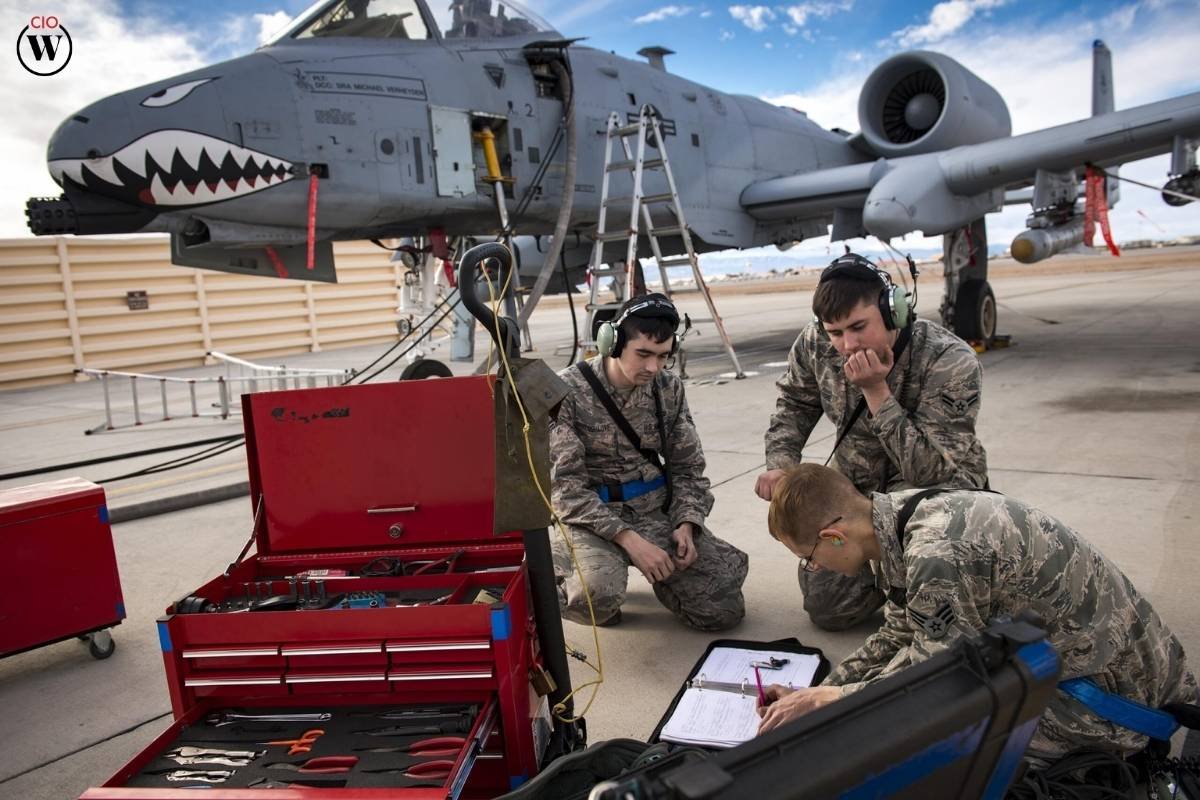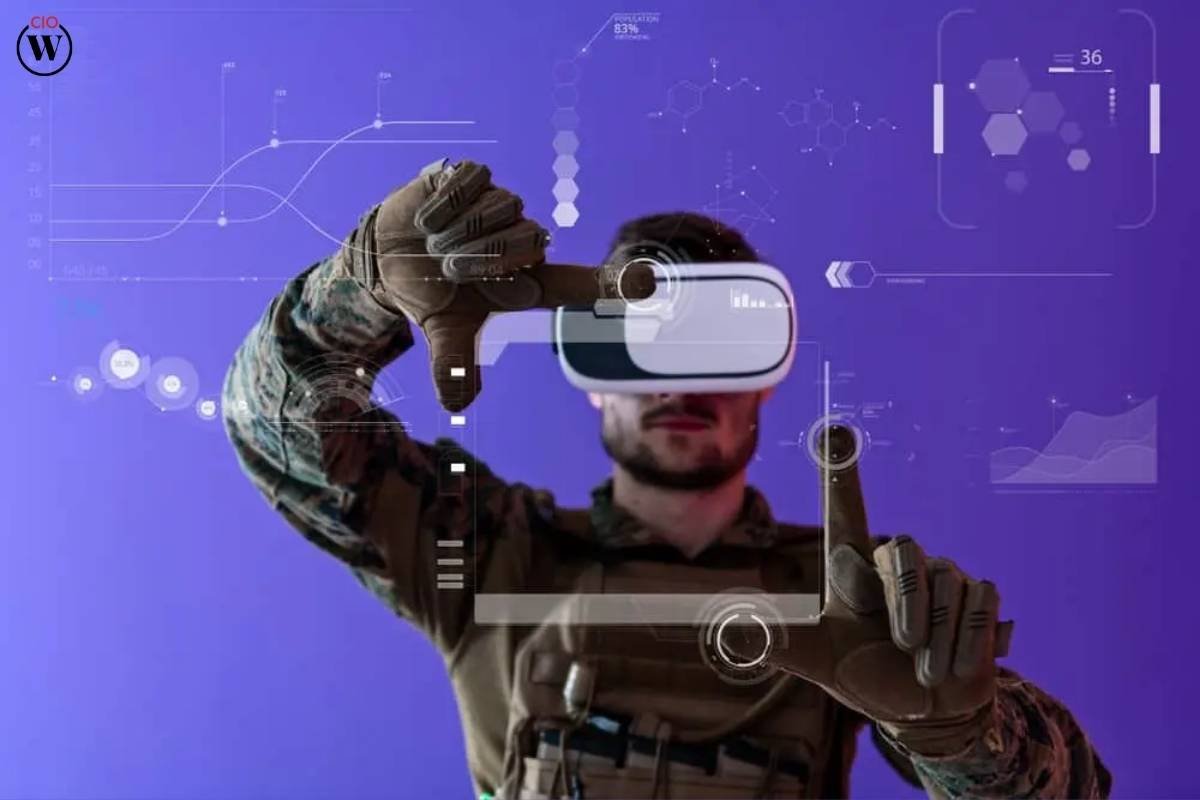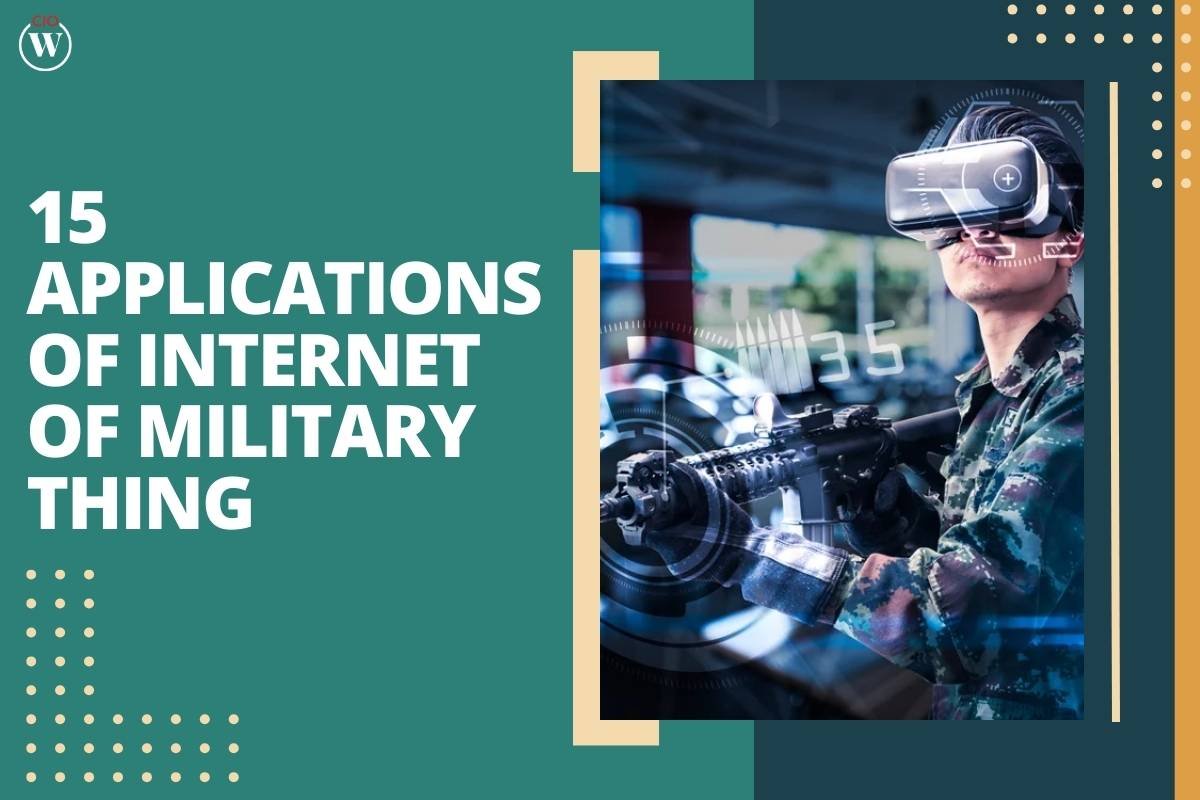Source – Army Technology
In the ever-evolving landscape of modern warfare, technology stands as a pivotal force, reshaping strategies, tactics, and the very nature of conflict itself. One such technological marvel making waves in the defense sector is the Internet of Military Things (IoMT). Combining the power of interconnected devices, sensors, and advanced analytics, IoMT is revolutionizing military operations across the globe. From enhancing situational awareness to optimizing logistics, the applications of IoMT are diverse and far-reaching. In this article, we delve into the top 15 applications of Internet of Military Things that are transforming the future of warfare.
Here are the top 15 applications of Internet of Military Things:
1. Enhanced Situational Awareness:
Situational awareness is paramount in military operations, enabling commanders to make informed decisions in real-time. IoMT facilitates this by integrating various sensors, drones, and surveillance systems to provide a comprehensive view of the battlefield. Through interconnected networks, troops can access vital information such as enemy positions, terrain analysis, and weather conditions, enhancing their operational effectiveness and minimizing risks.
2. Predictive Maintenance:

Maintenance of military equipment is crucial for ensuring operational readiness and mission success. Internet of Military Things enables predictive maintenance by leveraging data from sensors embedded in vehicles, aircraft, and weapon systems. By analyzing factors such as engine performance, component wear, and usage patterns in real-time, predictive maintenance algorithms can identify potential failures before they occur, allowing for proactive repairs and minimizing downtime.
3. Logistics Optimization:
The logistics of deploying troops, equipment, and supplies in the field is a complex and challenging task. IoMT streamlines logistics operations by providing real-time tracking and monitoring of assets throughout the supply chain. From inventory management to route optimization, IoMT systems enable efficient allocation of resources, reducing costs and enhancing agility in military logistics.
4. Health Monitoring:
The health and well-being of military personnel are paramount for mission success. IoMT facilitates health monitoring by integrating wearable devices and medical sensors to track vital signs, detect injuries, and monitor overall health status. This real-time data allows for early intervention in case of medical emergencies, ensuring prompt medical care and enhancing the resilience of deployed forces.
5. Cybersecurity:
With the increasing digitization of military systems, cybersecurity has become a critical concern for defense organizations. Internet of Military Things addresses this challenge by implementing robust cybersecurity measures to safeguard sensitive data and prevent cyber threats. Through encrypted communication channels, secure authentication protocols, and intrusion detection systems, IoMT ensures the integrity and confidentiality of military communications and operations.
6. Remote Weapon Systems:
IoMT enables the development of remote weapon systems that can be controlled and operated remotely from a safe distance. These systems leverage advanced sensors, cameras, and actuators to provide precision targeting and engagement capabilities while keeping personnel out of harm’s way. From unmanned aerial vehicles (UAVs) to remotely operated ground vehicles (ROVs), IoMT-powered weapon systems are reshaping the future of warfare.
7. Intelligent Command and Control:
Command and control (C2) systems play a crucial role in orchestrating military operations and coordinating forces in the battlefield. IoMT enhances C2 capabilities by integrating data from multiple sources to provide commanders with a holistic view of the operational environment. Through advanced analytics and decision support tools, IoMT-enabled C2 systems enable faster decision-making, improved situational awareness, and enhanced mission effectiveness.
8. Target Identification and Tracking:

Internet of Military Things facilitates target identification and tracking through the use of advanced sensor networks, unmanned platforms, and artificial intelligence algorithms. By analyzing data from radars, cameras, and other sensors, IoMT systems can detect, classify, and track potential targets with high accuracy and reliability. This capability enhances the precision and effectiveness of military operations while minimizing collateral damage and civilian casualties.
9. Environmental Monitoring:
Environmental factors such as weather conditions, terrain features, and natural hazards significantly impact military operations. IoMT enables environmental monitoring by deploying sensors and monitoring stations to collect data on various environmental parameters in real-time. This information allows military planners to assess environmental risks, plan routes, and adapt strategies accordingly, enhancing the safety and success of military missions.
10. Battlefield Simulation and Training:
Training is essential for preparing military personnel for the rigors of combat. IoMT facilitates realistic battlefield simulation and training exercises by creating virtual environments that replicate real-world scenarios. By integrating data from sensors, simulators, and live-fire exercises, IoMT-powered training systems provide immersive training experiences that enhance the skills, readiness, and effectiveness of military personnel.
11. Supply Chain Management:
IoMT plays a crucial role in optimizing supply chain management by providing real-time visibility into the movement of personnel, equipment, and supplies. Through interconnected sensors and tracking systems, military logisticians can monitor inventory levels, track shipments, and identify potential bottlenecks in the supply chain. This enables efficient resource allocation, reduces lead times, and enhances overall supply chain resilience.
12. Counter-Drone Systems:
With the proliferation of drones in modern warfare, countering hostile drone threats has become a priority for military forces. IoMT enables the development of sophisticated counter-drone systems that leverage sensors, radars, and artificial intelligence to detect, track, and neutralize enemy drones. By integrating data from multiple sources, including ground-based sensors, aerial platforms, and electronic warfare systems, IoMT-powered counter-drone systems provide comprehensive protection against airborne threats.
13. Biometric Authentication:
Internet of Military Things enhances security and access control through the implementation of biometric authentication systems. By integrating biometric sensors such as fingerprint scanners, iris scanners, and facial recognition technology into military devices and facilities, IoMT ensures that only authorized personnel can access sensitive information and restricted areas. This strengthens perimeter security, prevents unauthorized access, and enhances overall operational security.
14. Environmental Monitoring:
IoMT facilitates environmental monitoring by deploying sensors and monitoring stations to collect data on various environmental parameters in real-time. This information allows military planners to assess environmental risks, plan routes, and adapt strategies accordingly, enhancing the safety and success of military missions. From monitoring air quality and pollution levels to tracking seismic activity and natural disasters, IoMT-powered environmental monitoring systems provide valuable insights for decision-making in complex operational environments.
15. Energy Management:

Energy management is critical for maintaining operational readiness and sustainability in military operations. IoMT enables efficient energy management by integrating smart meters, sensors, and control systems to monitor and optimize energy consumption across military installations and platforms. By analyzing data on energy usage patterns, optimizing equipment operation, and implementing energy-saving measures, IoMT helps reduce fuel consumption, minimize environmental impact, and increase the resilience of military forces in the field.
Conclusion
In conclusion, the Internet of Military Things (IoMT) is revolutionizing the way armed forces operate and conduct warfare. From enhancing situational awareness to optimizing logistics and improving healthcare, the applications of Internet of Military Things are diverse and far-reaching. By harnessing the power of interconnected devices, sensors, and advanced analytics, IoMT is reshaping the future of defense and security, ensuring that militaries remain agile, adaptable, and prepared to meet the challenges of the 21st century battlefield.









